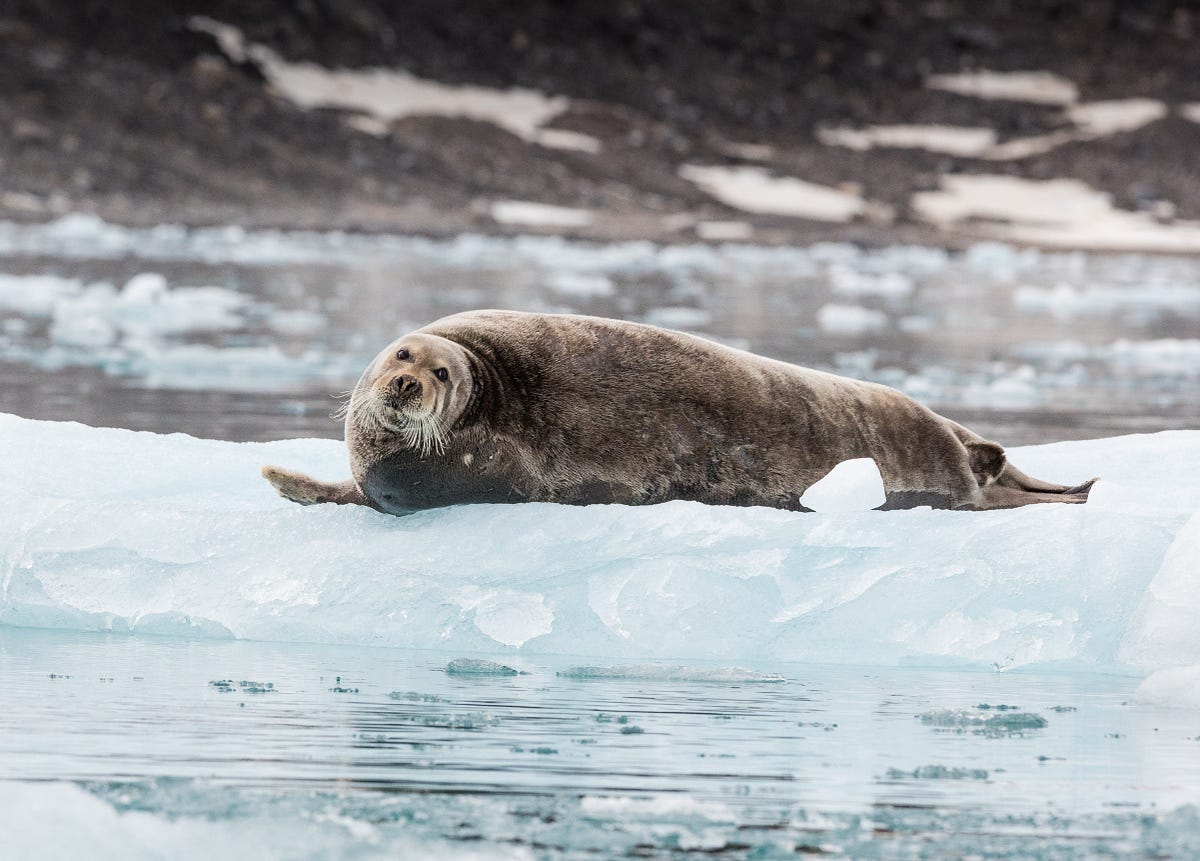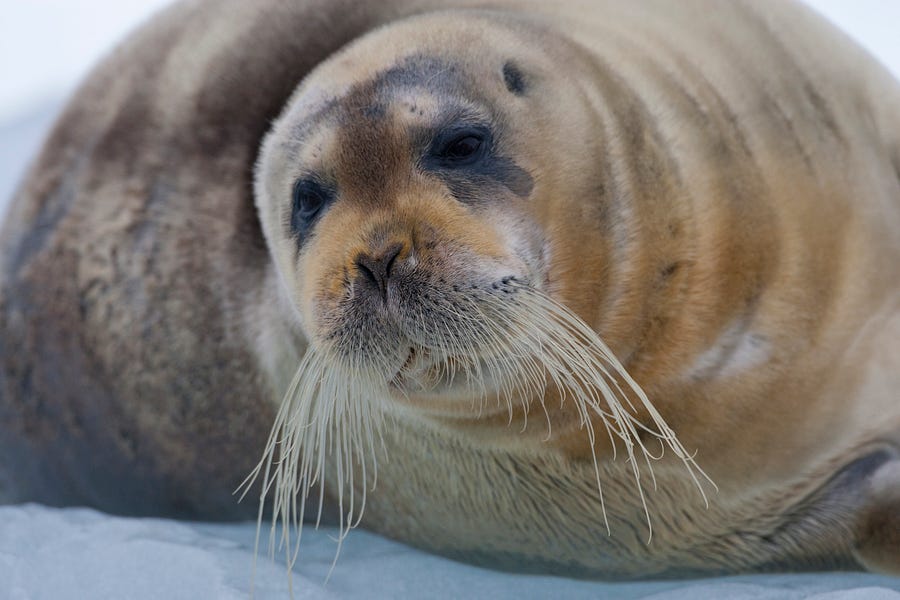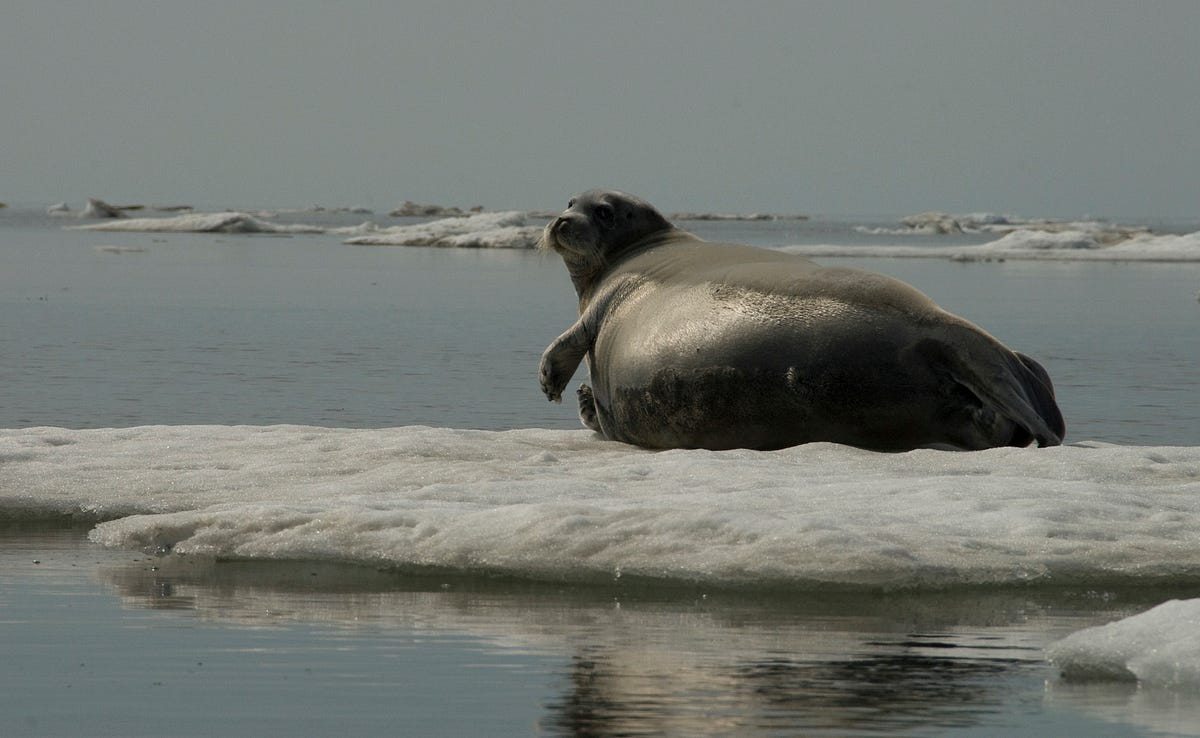
So cute, so precedent-setting. CREDIT: iStock/AG-ChapelHill
A federal court found that animals can be listed as endangered based on climate projections...
Despite living in the Arctic in a time of unprecedented climate change, the bearded seal is doing okay: the International Union for Conservation of Nature lists it as species of least concern, its population size remains fairly robust, and there have been no clear signs of a decline. But climate projections show that by mid-century, the Arctic sea ice the bearded seal depends on for survival will decline by at least 40 percent, meaning odds are high that, if climate change continues apace and models hold true, the bearded seal won’t be okay for long.
And that, according to a landmark decision handed down Monday by the U.S. 9th Circuit Court of Appeals, is enough to warrant listing the species as endangered, even though it’s not endangered right now — a decision that could have implications for future conservation cases around the country.

Beards of change. CREDIT: iStock/pum_eva
The Center for Biological Diversity, which first petitioned for the bearded seal to be listed as endangered eight years ago, applauded the court’s decision, noting that it would help protect the species from the threat of climate change.
“This is a huge victory for bearded seals and shows the vital importance of the Endangered Species Act in protecting species threatened by climate change,” Kristen Monsell, an attorney for the Center of Biological Diversity, said in a statement. “This decision will give bearded seals a fighting chance while we work to reduce the greenhouse gas emissions melting their sea-ice habitat and keep dirty fossil fuels in the ground.”
In 2008, citing studies which showed that the bearded seal’s habitat would rapidly decline in the face of climate change, the Center for Biological Diversity asked asked the National Marine Fisheries Service (NMFS) to list the bearded seal as as “threatened” under the Endangered Species Act. Receding sea ice, the Center argued, would force bearded seals to nurse their pups closer to the shore — exposing them to land-based predators like polar bears — and search for food in deeper, less productive waters.
“This is a huge victory for bearded seals and shows the vital importance of the Endangered Species Act in protecting species threatened by climate change.”
In 2012, NMFS agreed with the Center for Biological Diversity’s petition, and listed the bearded seal as threatened. Two years later, fossil fuel interests like the Alaska Oil and Gas Association and the American Petroleum Institute, joined by the state of Alaska and several native Alaskan groups, filed a lawsuit disputing the listing. In 2014, a lower court vacated NMFS’ initial listing, stating it was “based upon speculation” and calling it “arbitrary and capricious.”

Does this face say “arbitrary and capricious” to you? CREDIT: Michael Cameron/NOAA Fisheries Service via AP
On Monday, a three-judge panel overturned that decision, concluding that the NMFS acted reasonably, based on “substantial evidence,” when it found that climate change would endanger the bearded seal population in the foreseeable future.
“There is no debate that temperatures will continue to increase over the remainder of the century and that the effects will be particularly acute in the Arctic,” the decision, written by Circuit Judge Richard Paez, read. “The current scientific consensus is that Arctic sea ice will continue to recede through 2100, and NMFS considered the best available research to reach that conclusion.”
But perhaps more importantly, the court found that the NMFS’ definition of “foreseeable future” as 500 to 100 years was not too broad, even if climate models can be volatile that far out.
“The fact that climate projections for 2050 through 2100 may be volatile does not deprive those projections of value in the rulemaking process,” the decision read. “The ESA does not require NMFS to make listing decisions only if underlying research is ironclad and absolute.”

CREDIT: Michael Cameron/NOAA Fisheries Service via AP
That decision, according to Vermont Law School professor Pat Parenteau, makes this particular finding uncommon.
“‘Reasonably foreseeable,’ we’ve been wondering what that meant, and I guess the answer is that it depends on the species and the circumstance,” Parenteau said. “Pushing it out 50 to 100 years is certainly pushing the envelope on ‘foreseeable.’ I can see where other courts would disagree with that and think it is speculative.”
But it’s not completely without precedent. In 2008, the U.S. Department of the Interior listed the polar bear as threatened because of lessening sea ice due to climate change; it was the first time that a species had been listed as threatened under the Endangered Species Act due to climate projections. And in April, a U.S. District Court ruled that the Fish and Wildlife Service must take climate change and project declines in snowpack into account when considering whether or not to list the wolverine as as threatened.
It’s possible that future courts could take this decision into account when making rulings related to the Endangered Species Act, Parenteau said, but that would be up to the discretion of that particular court. Some conservative courts might balk at the idea of interpreting “foreseeable future” to mean such a wide stretch of time, while others might view the 9th Circuit’s decision as well-reasoned precedence.
“Until we get serious about reducing emissions and stopping fossil fuel infrastructure, it won’t matter. We’re just keeping track of the ones that are going.”
Parenteau said he expects the decision to be appealed to the Supreme Court, though it’s possible that the court might not choose to hear the case, especially if the vacancy left by Justice Scalia’s death remains unfilled. In that case, the 9th Circuit’s decision would stand.
But even if more species eventually are listed as “threatened” or “endangered” under the ESA, Parenteau warned that such a designation does little to stem the global warming-fueled loss of habitat that threatens those species in the first place.
“All we’re doing is listing them,” he said. “Until we get serious about reducing emissions and stopping fossil fuel infrastructure, it won’t matter. We’re just keeping track of the ones that are going.”
Reporter at ThinkProgress.
source: https://thinkprogress.org/
original story HERE
Get more of The Global Warming Blog. Bookmark this page and sign up for the blog’s free RSS Feed. Sign up for free Global Warming Blog by clicking here. You will automatically be emailed a regular summary of the latest global warming headlines.
To help do something about the climate change and global warming emergency, click here.
Sign up for our free Global Warming Blog by clicking here. (In your email, you will receive critical news, research, and the warning signs for the next global warming disaster.)
To share this blog post: Go to the Share button to the left below.

Be the first to comment
Sign in with